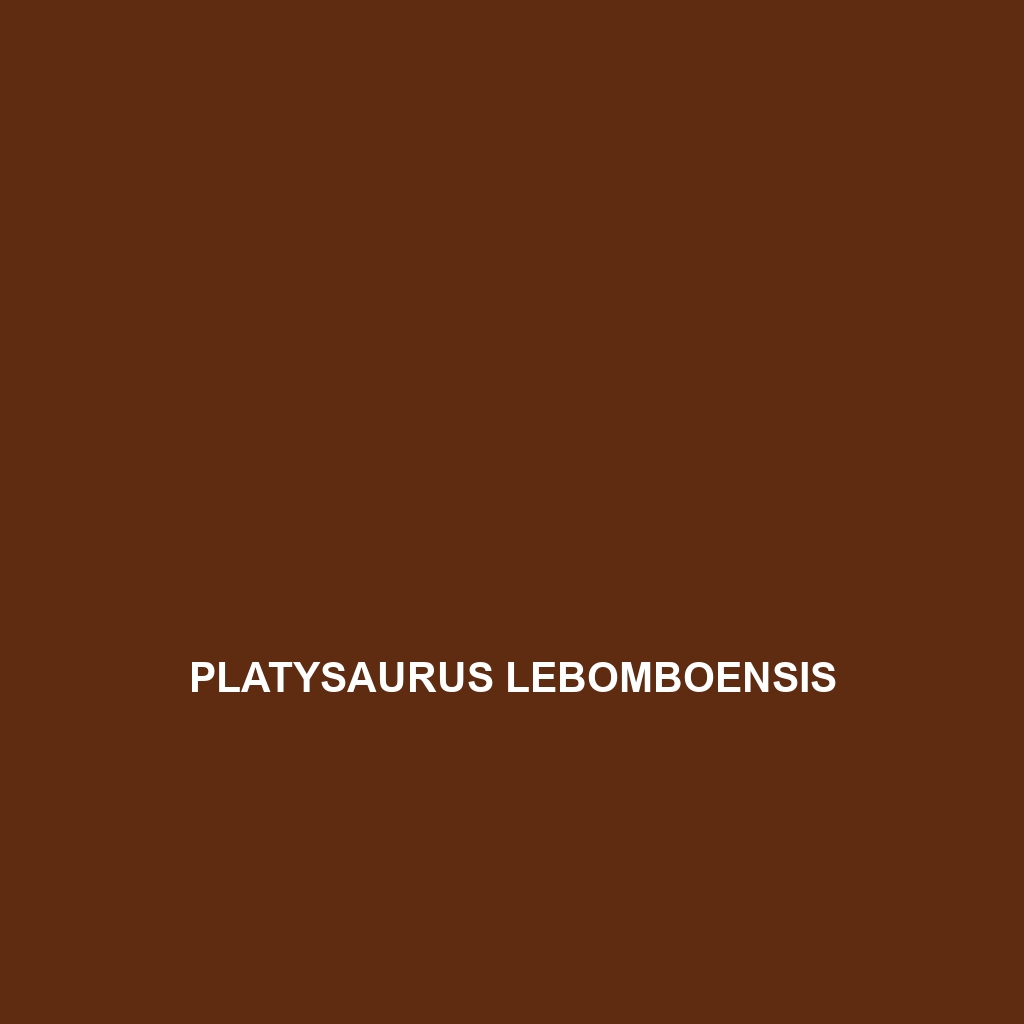Common Name
Platysaurus lebomboensis
Scientific Name
Platysaurus lebomboensis
Habitat
Platysaurus lebomboensis primarily thrives in diverse environments across southeastern Africa, particularly along the Lebombo Mountains. These lizards are often found in temperate forests and savannas, favoring regions with moderate humidity and access to sunlight. The species prefers rocky outcrops and areas with low vegetation that provide both shelter and hunting grounds. These habitats typically host a range of temperatures, which can fluctuate distinctly between day and night, allowing for a wide adaptation to various microclimates. As climate change alters local ecosystems, understanding their preferred habitats enhances conservation efforts to maintain this species’ survival.
Physical Characteristics
Platysaurus lebomboensis exhibits remarkable physical attributes that distinguish it from other lizards within the same family. This species can reach lengths of up to 25 centimeters, characterized by a flattened body and elongated limbs. The coloration varies significantly, featuring shades of brown and green, which provide excellent camouflage against the earthy tones of its habitat. In addition, they possess a unique dorsal pattern of bands or spots that aid in identification. Their tails are long and robust, often displaying vibrant hues that can change during social interactions, thus playing a role in communication.
Behavior
Behaviorally, Platysaurus lebomboensis is primarily diurnal, being most active during the daytime when they forage for food. Their social structure can be defined by established hierarchies, particularly during mating seasons when males engage in elaborate displays to attract females. Notably, their mating rituals involve intricate body movements and color changes that signal readiness. They are known to exhibit territorial behavior, where dominant males defend their chosen territories from rivals. During the night, these lizards often seek refuge in crevices or under leaf litter to protect themselves from nocturnal predators.
Diet
Platysaurus lebomboensis is classified as an insectivore, primarily feeding on insects such as ants, beetles, and termites. They are adept hunters, utilizing quick movements and sharp eyesight to catch their prey. Occasionally, they may also consume plant matter, integrating a small amount of herbivory into their diet, particularly during dry seasons when insect availability diminishes. Their feeding habits reflect a crucial role in controlling insect populations, thereby maintaining ecological balance in their habitats.
Reproduction
The reproductive cycle of Platysaurus lebomboensis typically coincides with seasonal rains, which provide optimal conditions for laying eggs. Mating rituals occur in the warmer months, with females laying clutches of about 3 to 5 eggs in concealed locations such as rock crevices or under leaf litter for protection against predators. The incubation period lasts approximately 60 days, after which the hatchlings emerge fully formed, capable of independent survival. Parental care is minimal, as adults do not engage in nurturing their offspring beyond the laying process.
Conservation Status
The current conservation status of Platysaurus lebomboensis is classified as Least Concern according to the IUCN Red List. However, habitat destruction due to agricultural expansion and urban development poses a potential threat to its population. Efforts are underway in some regions to promote habitat restoration and awareness about the importance of biodiversity conservation. Continued monitoring of their populations is essential to ensure they remain stable, as changes in climate and human interference could impact their habitat significantly.
Interesting Facts
One interesting aspect of Platysaurus lebomboensis is its ability to change colors as a means of communication and environmental adaptation. In competitive situations, males can display brighter colors, signaling strength and stamina. Additionally, these lizards are known for their impressive climbing abilities, often observed scaling vertical surfaces in search of food or shelter. This adaptability truly highlights their evolutionary success in diverse habitats.
Role in Ecosystem
Platysaurus lebomboensis plays a vital role in its ecosystem as both a predator and prey species. By controlling insect populations, these lizards contribute to maintaining a balanced food web. They serve as an important food source for various predators, including birds of prey and larger reptiles, thus supporting the biodiversity of their habitats. Their presence indicates a healthy ecosystem, making them a valuable species for ecological studies and conservation efforts.
